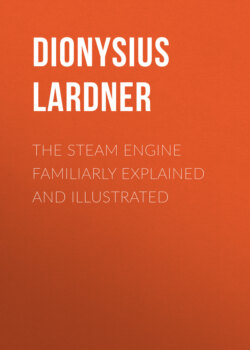Читать книгу The Steam Engine Familiarly Explained and Illustrated - Dionysius Lardner - Страница 6
На сайте Литреса книга снята с продажи.
HERO OF ALEXANDRIA, 120 BC
ОглавлениеTable of Contents
Fig.1.
(23.) In a work entitled Spiritalia seu Pneumatica, one of the numerous works of this philosopher which has remained to us, is contained a description of a machine moved by vapour of water. A hollow sphere, of which A B represents a section, is supported on two pivots at A and B, which are the extremities of tubes A C D and B E F, which pass into a boiler where steam is generated. This steam flows through small apertures at the extremities A and B, and fills the hollow sphere. One or more horizontal arms K G, I H, project from this sphere, and are likewise filled with steam, but are closed at their extremities. Conceive a small hole made near the extremity G, but at one side of one of the tubes; the steam confined in the tube and globe would immediately rush from the hole with a force proportionate to its pressure within the globe. On the common principle of mechanics a re-action would be produced, and the tube would recoil in the same manner as a gun when discharged. The tubular arm K G being thus pressed in a direction opposed to that in which the steam issues, the sphere would revolve accordingly, and would continue to revolve so long as the steam would continue to flow from the aperture. The force of recoil would be increased by making a similar aperture in two or more arms, care being taken that all the apertures should be placed so as to cause the sphere to revolve in the same direction.
This motion being once produced might be transmitted by ordinary mechanical contrivance to any machinery which its power might be adequate to move.
This method of using steam is not adopted in any part or any form of the modern steam engine.
